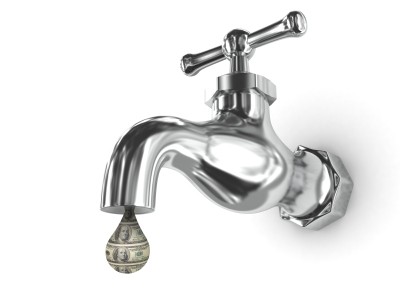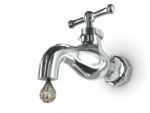
MANY SMALL BUSINESS owners do not fully understand their cash flow statement. This is surprising, given that all businesses essentially run on cash, and cash flow is the lifeblood of your business.
Some business experts even say that a healthy cash flow is more important than your business' ability to deliver its goods and services! That's hard to swallow, but consider this: if you fail to satisfy a customer and lose that customer's business, you can always work harder to please the next customer, but if you fail to have enough cash to pay your suppliers, creditors or employees, you're out of business!
What is Cash Flow?
Cash flow, simply defined, is the movement of money in and out of your business; these movements are called inflow and outflow. Inflows for your business primarily come from the sale of goods or services to your customers. The inflow, however, only occurs when you make a cash sale or collect on receivables. Remember, it is the cash that counts! Other examples of cash inflows are borrowed funds, income derived from sales of assets, and investment income from interest.
Outflows for your business are generally the result of paying expenses. Examples of cash outflows include paying employee wages, purchasing inventory or raw materials, purchasing fixed assets, operating costs, paying back loans, and paying taxes.
Profit and cash flow are two entirely different concepts, each with entirely different results. The concept of profit is somewhat broad and only looks at income and expenses over a certain period—say, a fiscal quarter. Profit is a useful figure for calculating your taxes and reporting to the IRS.
Cash flow, on the other hand, is a more dynamic tool, focusing on the day-to-day operations of a business owner. It is concerned with the movement of money in and out of a business, but more importantly, it is concerned with the times at which the movement of the money takes place.
Theoretically, even profitable companies can go bankrupt. It would take a lot of negligence and total disregard for cash flow, but it is possible. Consider how the difference between profit and cash flow relate to your business.
The sooner a business learns how to manage its cash flow, the better the chances of survival. Furthermore, the business will be able to protect the company's short-term reputation as well as position it for long-term success.
The first step toward taking control of your company's cash flow is to analyze the components that affect the timing of your cash inflows and outflows. A thorough analysis of these components will reveal problem areas that lead to cash flow gaps in your business. Narrowing, or even closing, these gaps is the key to cash flow management.
Some of the more important components to examine are:
- Accounts receivable
- Credit terms
- Credit policy
- Inventory
- Accounts payable and cash flow






















